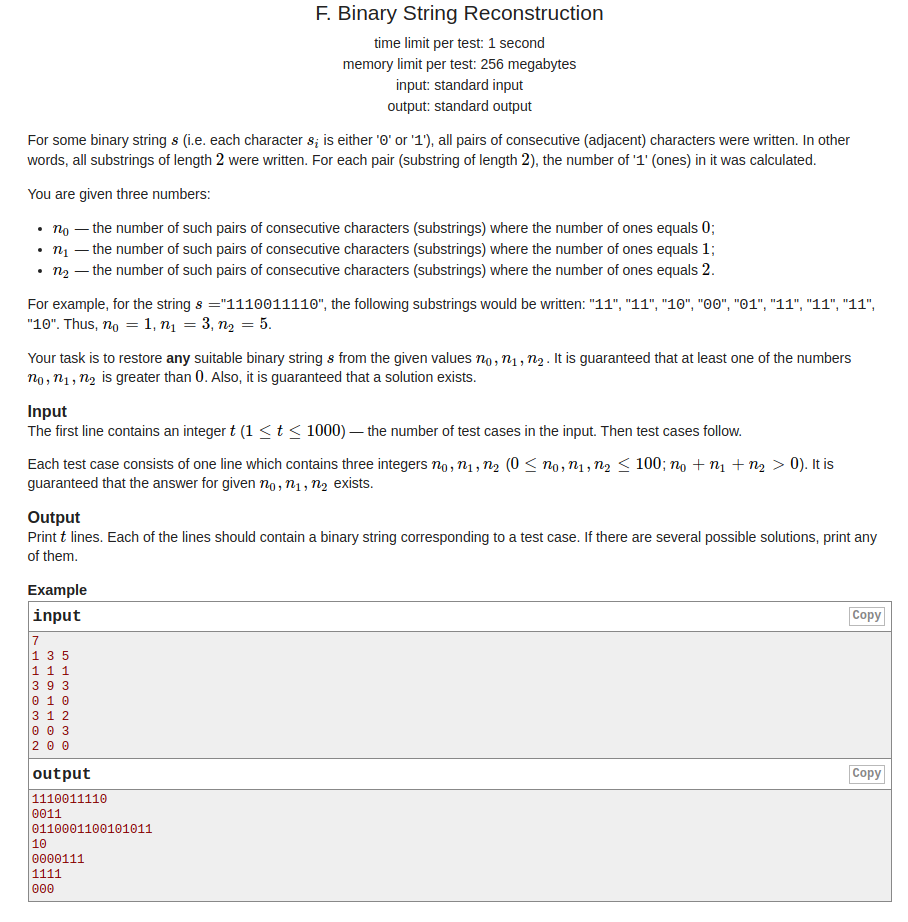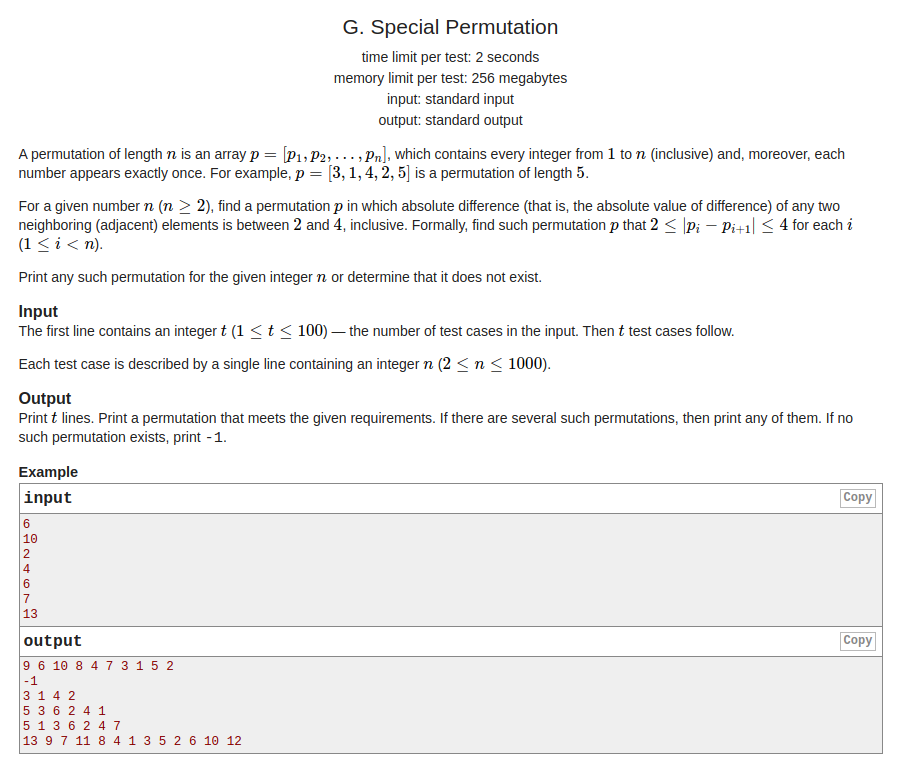
-
题意:求一个只由\(01\)组成的字符串,使得它所有长度为\(2\)的
子串满足:每对子串的数字和为\(0,1,2\)的个数为\(a,b,c\). -
题解:我们先考虑子串数字和为\(1\)的情况,构造出一个\(10\)的循环串,然后在它的头部尾部适当添加\(1\)和\(0\),使得a和c也满足即可.需要特判\(b=0\)的情况,并且\(b\)奇偶不同构造情况也不同.
-
代码:
#include <iostream> #include <cstdio> #include <cstring> #include <cmath> #include <algorithm> #include <stack> #include <queue> #include <vector> #include <map> #include <set> #include <unordered_set> #include <unordered_map> #define ll long long #define fi first #define se second #define pb push_back #define me memset const int N = 1e6 + 10; const int mod = 1e9 + 7; using namespace std; typedef pair<int,int> PII; typedef pair<long,long> PLL; int t; int a,b,c; string s; int main() { ios::sync_with_stdio(false); cin>>t; while(t--){ s=""; cin>>a>>b>>c; if(b==0){ if(c){ c++; while(c--) s+="1"; } if(a){ a++; while(a--) s+="0"; } } else if(b%2==1){ int tmp=(b+1)/2; while(tmp--) s+="10"; while(c--) s="1"+s; while(a--) s+="0"; } else{ int tmp=b/2; while(tmp--) s+="10"; while(c--) s="1"+s; while(a--) s+="0"; s+="1"; } cout<<s<<endl; } return 0; }

-
题意:给你一个数\(n\),构造一个\(1\le p \le n\)的序列,对于\(\forall\;1\le i < n\)有:\(2 \le |p_{i}-p_{i+1}| \le 4\).如果不存在,输出\(-1\).
-
题解:易知:当且仅当\(n=2\;or\;n=3\)时不满足条件.
首先先将\(1\)~\(n\)中所有的偶数输出,然后:
1.如果\(n\)是偶,那么就先输出第二大和最大的奇数,剩下的奇数递减输出即可.
2.如果n是奇,那么就先输出第三大的奇数,剩下的奇数递减输出即可.
-
代码:
#include <iostream> #include <cstdio> #include <cstring> #include <cmath> #include <algorithm> #include <stack> #include <queue> #include <vector> #include <map> #include <set> #include <unordered_set> #include <unordered_map> #define ll long long #define fi first #define se second #define pb push_back #define me memset const int N = 2e4; const int mod = 1e9 + 7; using namespace std; typedef pair<int,int> PII; typedef pair<long,long> PLL; int t; int n; int main() { ios::sync_with_stdio(false); cin>>t; while(t--){ cin>>n; if(n==2 || n==3) puts("-1"); else{ for(int i=2;i<=n;i+=2){ printf("%d ",i); } if(n%2==0){ printf("%d %d ",n-3,n-1); for(int i=n-5;i>=1;i-=2){ printf("%d ",i); } } else if(n%2==1){ printf("%d ",n-4); printf("%d ",n); for(int i=n-2;i>=1;i-=2){ if(i!=n-4) printf("%d ",i); } } puts(""); } } return 0; }